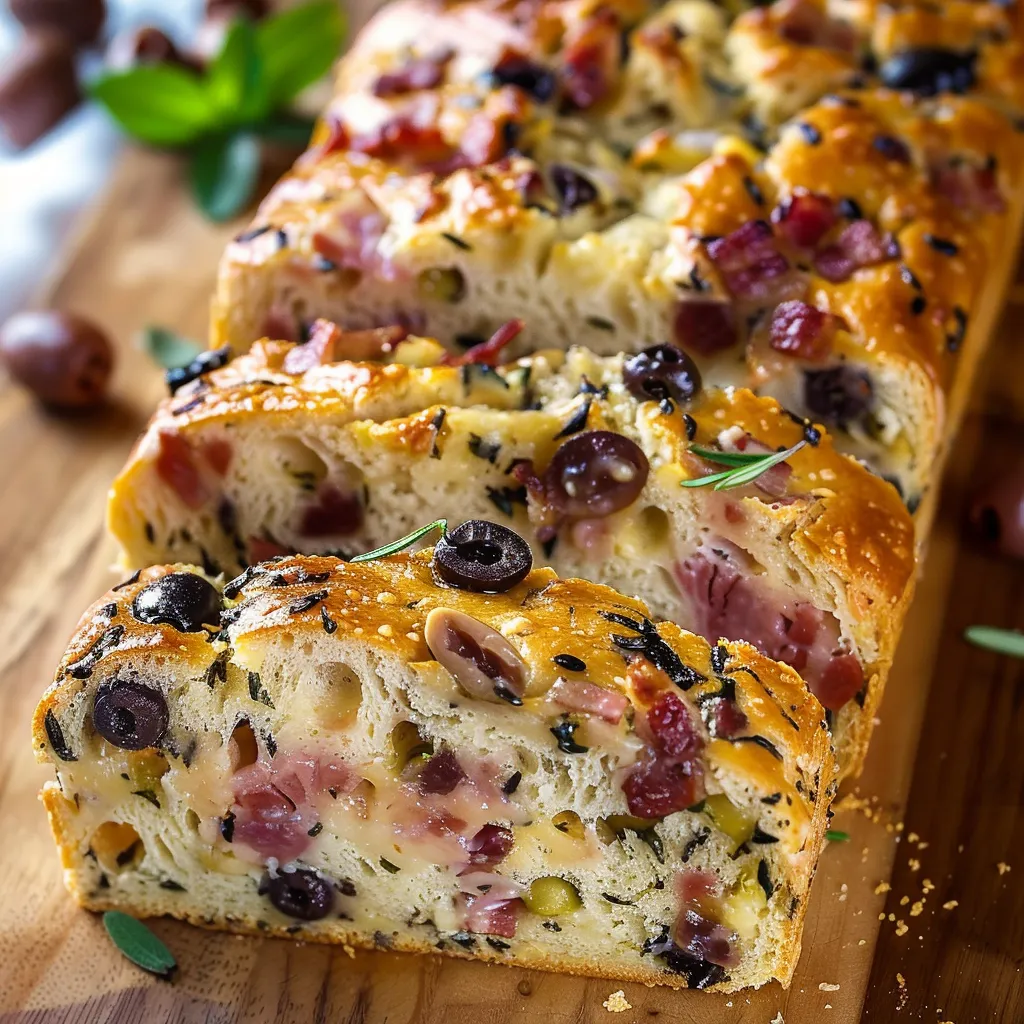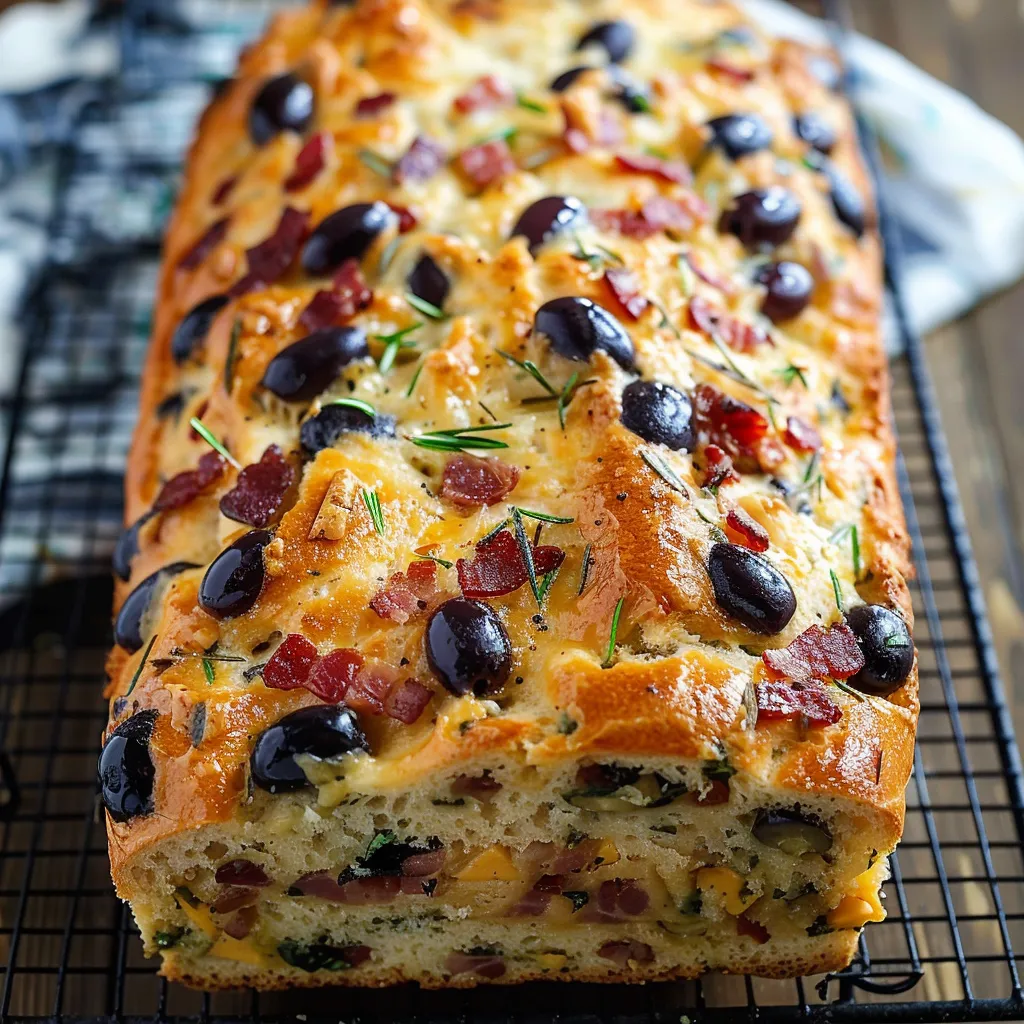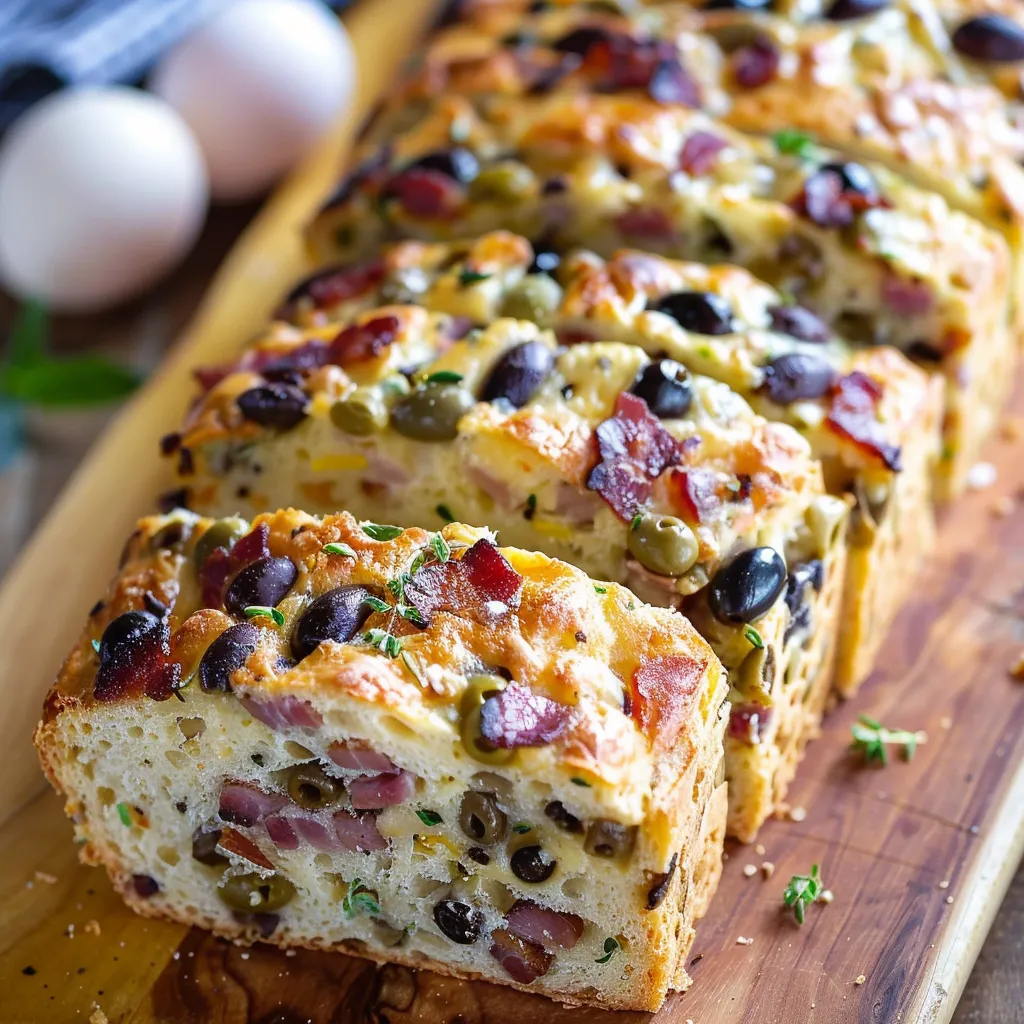 Pin to Favorites
Pin to Favorites
This olive, bacon and cheese bread transforms basic bread baking into a flavor-packed adventure. The combination of savory olives, smoky bacon, and melty cheese creates an irresistible loaf that works equally well alongside soup or as the star of your appetizer spread.
I first made this bread for a potluck where I needed something substantial yet portable. The loaf disappeared within minutes, with multiple guests requesting the recipe. Now it's my signature contribution to neighborhood gatherings.
Ingredients
- All purpose flour: Creates the perfect texture and structure
- Active dry yeast: Provides reliable rise for fluffy results
- Sugar: Feeds the yeast and helps achieve a golden crust
- Salt: Enhances all flavors and controls yeast activity
- Lukewarm water: Activates the yeast without killing it
- Olive oil: Adds moisture and subtle flavor
- Green or Kalamata olives: Bring briny bursts of flavor
- Cooked bacon: Contributes smokiness and savory depth
- Shredded cheddar cheese: Melts beautifully throughout
- Fresh rosemary: Optional but adds wonderful aromatic notes
- Egg wash: Creates that bakery style golden sheen
Step-by-Step Instructions
- Prepare the Dough:
- Combine flour, yeast, sugar, and salt in a large bowl, creating a well in the center. Pour in lukewarm water and olive oil, then mix until a shaggy dough forms. The water should feel just slightly warm to the touch, never hot, as excessive heat will kill the yeast.
- Knead the Dough:
- Transfer dough to a lightly floured work surface and knead for 8-10 minutes. Use the heel of your hand to push the dough away, then fold it back toward you, rotate a quarter turn and repeat. The dough is ready when it feels smooth, elastic, and springs back when gently poked.
- First Rise:
- Place the kneaded dough in an oiled bowl, turning once to coat all sides. Cover with a clean kitchen towel and set in a draft free warm spot for about 1 hour. Look for the dough to double in volume, indicating that fermentation has properly occurred.
- Mix in the Goodies:
- Gently punch down the risen dough to release excess gas. Add chopped olives, crumbled bacon, cheese, and rosemary if using. Fold ingredients in gradually, working them throughout the dough for even distribution. Each bite should contain a balance of all flavors.
- Shape and Second Rise:
- Form the dough into your desired shape. For a traditional loaf, place in a greased 9x5 inch loaf pan. For rustic presentation, shape into a round or oval on a parchment lined baking sheet. Cover again and allow to rise for 30 minutes until puffy and expanded.
- Baking the Bread:
- Preheat oven to 375°F while the bread completes its second rise. Brush the top with beaten egg wash for a glossy golden finish. Bake for 25-30 minutes until deeply golden and hollow sounding when tapped on the bottom. Internal temperature should reach approximately 190°F.
 Pin to Favorites
Pin to Favorites
The olives are truly the secret weapon in this recipe. I discovered their importance when I made a batch without them during a pantry shortage. While still good, the bread lacked that distinctive briny punch that makes this loaf so addictive. My husband now insists I always keep olives on hand specifically for this bread.
Storage Solutions
This bread stays fresh at room temperature in an airtight container or wrapped in foil for up to 3 days. For longer storage, slice the cooled bread and freeze individual portions with parchment paper between slices. This method allows you to thaw only what you need for immediate enjoyment. Reheat frozen slices directly in the toaster for the best texture.
Perfect Pairing Ideas
Serve warm slices alongside a hearty vegetable soup or stew where the bread can soak up the flavorful broth. For an elevated appetizer, cut into small cubes and lightly toast before serving with additional olives and a selection of cured meats. The bread also makes exceptional grilled cheese sandwiches when sliced and toasted with additional cheese melted between slices.
Troubleshooting Tips
If your dough seems too dry during mixing, add water one tablespoon at a time until it comes together. Conversely, if the dough feels overly sticky, incorporate small amounts of flour until it becomes manageable. When adding the mix ins, work slowly to prevent tearing the dough structure you developed during kneading. For cleaner slices, allow the bread to cool completely before cutting, though the temptation to slice while warm is nearly impossible to resist.
 Pin to Favorites
Pin to Favorites
This bread is sure to become a staple in your kitchen, proving that gourmet flavor is achievable with simple ingredients and steps.
Frequently Asked Questions
- → Can I use a different type of cheese?
Yes, feel free to substitute cheddar with your favorite melting cheese such as Gouda, mozzarella, or Gruyere for a unique flavor profile.
- → Do I need to use fresh rosemary?
Fresh rosemary is optional but adds an aromatic touch. You can also use dried rosemary or skip it entirely if preferred.
- → Can the dough be made in advance?
Yes, you can prepare the dough the night before and let it rise in the refrigerator. Allow it to return to room temperature before kneading in the additional ingredients.
- → What type of olives work best?
Pitted green or Kalamata olives are great options for this bread. You can chop them roughly for texture and flavor distribution.
- → How do I know when the bread is fully baked?
The bread is done when it sounds hollow when tapped on the bottom and the crust has turned a golden-brown color. You can also use a thermometer – the internal temperature should reach about 190°F (88°C).
- → Can I omit bacon for a vegetarian version?
Absolutely, you can leave out the bacon or replace it with sun-dried tomatoes, roasted red peppers, or sautéed mushrooms for a vegetarian-friendly loaf.
